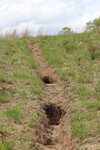
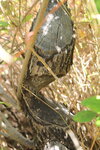


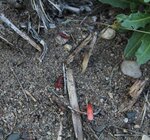
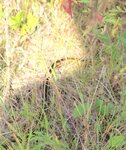






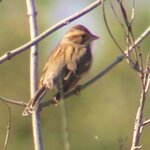
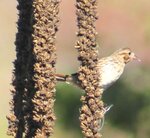
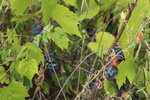

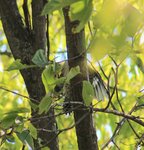
Nature lovers will soon have a chance to get even closer, following a unanimous city council vote Feb. 21 to approve new housing on the former Mississippi Dunes golf course.
Placed on the night’s regular agenda, a 377-lot housing plot adjacent to the Grey Cloud Dunes SNA will soon take shape, being split into three separate neighborhoods and featuring several different types of lifecycle housing.
Among the options for potential homebuyers are Capstone single homes starting in the low 400s, two different options by M/I Homes priced slightly higher, and custom homes on the river to be built by Hanson builders and Michael Lee Homes, starting from $600,000 to $700,000.
As to nature, several state and federal endangered species are nearby, with signage at Grey Cloud Dunes SNA listing the Henslow’s Sparrow (state endangered) along with other animals and plants. Also at issue but deemed per a developer survey to have little suitable habitat is the Rusty Patch Bumblebee, a federally protected species.
With the public hearing taking place at Plan Commission Monday Jan. 22, Mayor Myron Bailey nonetheless gave time for all to speak prior to council approval of the plat. Lisa Mueller of the Friends of Grey Cloud laid out a rationale for having a new EAW, based on the fact that it was a new plat.
“If the Mississippi Dunes is not in the AUAR, a separate environmental review is required for any proposed project that trips the threshold for an EAW and EIS.”
Michael Childs Jr. from the Prairie Island community, meanwhile, spoke to bring up the question of archaeological finds, with the State Historical Preservation Office (SHPO) saying that most sites were undocumented. And there was more.
“Trying to annex Grey Cloud Island for that gravel pit, we don’t forget that, because that was just recently too,” he said.
Turning in written comments, city resident Herb Reckinger said not to be mad at Pulte, Rachel, or David Gustafson.
“Without them there would be others,” he wrote. Nonetheless, he had some thoughts.
“First, I’m a very avid walker of the Dunes SNA,” he said. “I also worked at the SPP refinery and can well remember our maintenance guys talking about dumping barrels at the Dunes. Bad time, but without it, that area would likely have been housed years ago.”
Adjacent to the SNA, a dump site for Ashland refinery was cleaned up in the late twentieth century, giving birth to the Grey Cloud Dunes SNA. A creek from the SNA runs northwest across the former golf course, with groundwater analysis post site cleanup showing no enduring impact.
As to the creek, Reckinger said there was another potential issue.
“This golf course creek is commanded by the beaver population,” he said. At the north end of the golf course, two paved cart paths (close to each other) are bridged over the creek. There are two sizeable ponds…depending on where the beavers put their dam, a large portion of the first creek backs up.”
Saying the beavers were there “before us” and would chew up the new residential trees faster than these could be planted, Reckinger had a question.
“Do they get evicted by the project or do they evict themselves?” he asked of the local beaver population. Going on to say that the Prairie du Chien bedrock was under 50 feet (making it karst bedrock) and that there were considerable hoops to being permitted with creeks and wetlands, Reckinger asked if this had been taken into consideration.
“Have the engineers (or whatever they are) taken this all into consideration?” he asked.
Also raising issue with homes against tracks and possible rail derailment, Reckinger said “it only has to happen once,” with a derailment near 3M in 2005 sending rail cars into the Mississippi.
“Maybe folks who want a home there should be warned of a remote possibility,” he said of homes alongside the tracks. Also bringing up the Cowan residence and general loss of forage habitat for wildlife, Reckinger said the animals didn’t delineate property lines.
“The homes across (from) the Dunes SNA parking lot have eliminated the pathway of the deer,” he wrote. “The deer and coyotes don’t’ know the golf course from the SNA and use each as their safe haven. I haven’t seen turkeys at the Dunes in two years or the occasional otter. I don’t pay much attention to the smaller critters.”
An issue separate from the site itself, meanwhile, was council-to-citizen communication, with more than one person at the Wednesday meeting asking what the city’s rationale was.
“What is your rationale?” city resident Bill Schwen asked. “Where’s the dialogue, where’s the explanation for all these people?”
Also seeking the rationale was Rodney Hale, who questioned the use of a PUD, or Planned Use Development. What were the benefits to the city in the present case?
“That’s how we got the Thompson clubhouse, Ravine Park, and Thompson Park,” Hale said of the planning tool allowing for some leeway in plat designs to obtain a greater good.
Also speaking on the need for communication was Brooke Christenson.
“We do not support this development and it feels like you are not listening to us,” she told the council. Stephen Erickson was more direct.
“If our government cannot protect nature for itself, can they not hear 1,000 of us saying halt?” he asked.
Alas, it was all seemingly for naught.
“I am the naysayer,” city attorney Kori Land said from the council chamber Wednesday. “I’m the one that always comes in with a hard, heavy hand.”
More specifically, Land said that the developer had gone “above and beyond” and that citizen free speech was balanced with developer due process, and that council failure to approve the development before them could lead to a lawsuit.
With Mayor Bailey calling for a five minute recess in proceedings for city staff to collect answers to citizen comment, a brief adjournment took place, returning with clarification from city staff.
Beginning the answer session for city staff, Community Development Director Emily Schmitz gave clarity on the PUD.
“To cluster that with some smaller lots is that give and take,” she said of being able to preserve more natural features, with Parks and Recreation Director Zac Dokter spoke on the difference between neighborhood and city parks. While smaller than the 50-acre threshold for a community park, the riverfront Dunes Reserve included with development was adjacent to the SNA, he said. The Dunes Reserve was master planned to draw in residents from outside.
Also after the recess and prior to council approval, Mayor Bailey read a prepared statement in which he said he had written a letter to the DNR on land conservation and relating how the city had grown its park holdings since the early twentieth century, from 22 parks totaling 600 acres to 38 parks with 1,085 acres. Calling on Friends of Grey Cloud to become involved with the master plan for Grey Cloud Island, Bailey said he was proud of the proposal before the council.
“I have dreamed for years of being able to take my grandchildren down to the Mississippi River in Cottage Grove,” Bailey said of the new Mississippi Dunes Reserve included with the development. “I am proud of this proposal before us this evening and I support this development.”
Other council members also went on the record for and against the development
“We do not have that authority within the law,” Justin Olsen said of the desire by the Friends of Grey Cloud for the Council to reject the proposed housing development before them. Tony Khambata, while sharing that he was against development, likewise shared there was nothing the council could do to stop it given its position.
“I see a lot of mad faces,” he said, saying he wished the landowner was present.
“I wish he were here, because I would like to talk to him too.” he said of landowner David Gustafson. Gustafson holds the land through holding company Dunes LLC and TCB Properties LLC, and is looking to close with the DNR on conservation of adjacent lands this summer, previously marked by the city for medium density in its zoning code.
For council member Dave Thiede, meanwhile, the Friends of Grey Cloud had been “victorious” in keeping the council on its toes and as a “catalyst” in seeking more land for conservation.
“Even though you don’t believe it,” he said. Among the efforts by Friends of Grey Cloud are securing $6 million in last year’s budget for the nearby SNA, with help from Representative Rick Hansen.
Council member Monique Garza went on record in support of the development.
“It’s very important that the city grow,” she said, acknowledging that she was relatively new to the council and the issue. Garza said the development offered a wealth of opportunity to the community. Speaking for Rachel Development, meanwhile, Paul Robinson said the company would get to work to meet a March 31 deadline for birds at the site. Once April 1 comes, no trees or shrubs can be touched on site until mid-August, in order not to disturb nesting birds.
“That will be something we will get on right away if this is approved tonight,” he said of site prep at Mississippi Landing II prior to building.
With motion from Olsen seconded by Khambata, new homes are coming soon to the old golf course at Mississippi Dunes.